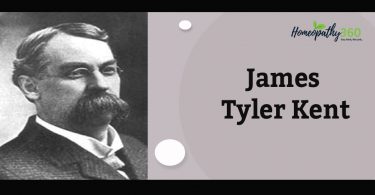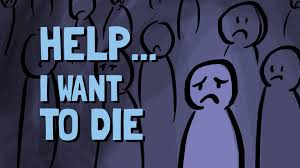INTRODUCTION
This book was written by Dr H C ALLEN to tackle all kinds of fever. The author was very much affected by the fact that quinine ( the Peruvian bark) which was mostly used for fevers gives injurious effects and sometimes it only suppresses the symptoms and thereby leads to the increased sufferings of the patients. This book includes the therapeutics of typhoid, typhus and fevers of all the intensities and names.
KEYWORDS
Therapeutics of fevers, typhus, typhoid, the malarial theory.
AIMS
Treating the types of fevers according to H.C. Allen.
OBJECTIVES
To know about the different types of fevers.
To find the similimum according to the types of fevers.
ABOUT THE AUTHOR
HENRY C. ALLEN, M.D. (1836-1909)
WORKS
Keynotes of Materia Medica with nosodes.
The Materia Medica of nosodes.
The Homoeopathic Therapeutics of Intermitent fever.
The Homoeopathic Therapeutics of Fever.
Therapeutics of Tuberculous affections.
THE THERAPEUTICS OF FEVER
EDITIONS
1st edition – 1879
2nd edition – 1884
Reprint edition – 1998
PARTS
2 parts – Materia Medica and Repertory part.
PREFACE
Include therapeutics of typhoid, typhus, fevers of every grade and name from acute sporadic, epidemic, intermittent to malignant type of malarial fevers.
Have to consider patient as a whole not only fever stage.
His/her idiosyncracies & constitutional inheritance.
Family history.
Miasm.
Authors own experience- remedy selection from totality ( objective, subjective and miasmatic).
Expressed obligation.
INTRODUCTION TO FEVER
THE CAUSE
Homoeopathy gives importance to objective & subjective symptoms.
Allopaths – intermittent fever can’t cure without quinine as it’s the antidote of marsh miasm which is the cause of intermittent fever.
Many theories from different stalwarts are as follows:
THE MALARIAL THEORY
(MARSH MIASM)
Epidemics occur as a result of decaying substance.
Should know the internal cause that is the miasm and treat.
THE PSORIC DIATHESIS
Another cause for intermittents –inherited – psoric or tubercular diathesis.
In Hahnemann’s chronic disease – more deeply psoric more malignant the attack.
This is true for all continued fevers.
SIMILIA – A NEVER FAILING GUIDE
If attack due to miasmatic must wait till disease show its true picture.
Physician should be sure about with symptoms and which remedy to select.
Consider the objective and subjective symptoms.
EXAMINATION OF THE PATIENT
Case taking.
History of disease.
Knowledge of MM.
Symptoms during different stages of fever.
Time of occurrence of paroxysm.
Degree or absence of thirst.
Constitutional ailments aroused by fever.
Individualising peculiarities must be noted.
Treating with quinine only suppress or destroy the disease.
THE GENUS EPIDEMICUS
In seaside intermittents – Arsenic album, Gelsemium, Natrum muriaticum.
After outflow of a river – Baptisia, Bryonia, Capsicum, Rhus toxicodendron.
Epidemic dysentery – Cinchona, Eucalyptus, Ipecac, Malaria officinalis.
Observe symptom peculiar to all patients and select the remedy.
WHEN TO ADMINISTER REMEDY
In aphorism 236 – administration of remedy after termination of paroxysm.
In aphorism 237 – if interval is too short, give medicine when perspiration decline/subsequent stage of paroxysm decline.
In aphorism 238 – one dose of properly indicated remedy may prevent many attacks.
In aphorism 245 – during improvement never repeat the remedy.
THE SIMILIMUM
More perfect similimum, the quicker and surer the cure.
Remedy should be proper whatever the potency is otherwise case will be a utter failure.
For example, Arsenicum album, Cinchona can never cure fever of Nux vomica.
Dunham says, “we seek a parallelism between drug symptom and symptom of patients”.
To cure an intermittent fever
Study the patient during apyrexia.
Observe all symptoms of pyrexia in three stages of cold, heat, and sweat.
Note if a stage is absent & which among them is marked.
Give importance to first rank symptoms to which drug must correspond in order to cure.
ANALYSIS OF A CASE
Time
Prodrome
Chill
Heat
Sweat
THE POTENCY
Must use all potencies.
Every case of intermittent fever can be cured with potentised remedy.
If cure takes place for patient he will surely have faith on physician and his methods.
CHARACTERISTIC SYMPTOMS
General action & constitutional action of remedy to be given importance.
Both objective & subjective symptoms have to be considered.
In aphorism 153 – characteristic symptoms are given.
Drug based on constitutional symptoms their conditions and concomitants should be prescribed.
TYPHOID, TYPHUS & CONTINUED FEVERS
This is the disease which Homoeopath gave more careful investigation.
ANAMNESIS
Case taking.
Individualising the patient.
Record the case.
1st remedy palliates – constitutional miasm & family history should consider.
Dr Carroll Dunham – once similar remedy found don’t change till change of symptoms form a new picture of disease.
Typhoid – ailments from morbid influence – mental/physical.
THE NAME : ITS USE & ABUSE
Typhoid – group of symptoms appear sporadically, endemically , epidemically n even annually.
Typhus more contagious & malignant due to bad sanitation , ill treatment, live in crowded area.
Remedy based on diagnostic based – on pathological symptoms.
Based on therapeutics – Characteristics of patient.
Pathology needed for prognosis , sanitation, diets, etc.
Allen gave importance to constitutional miasm.
THE TRUE CAUSE OF TYPHOID
Cause lies in psoric and tubercular miasm.
Psoric miasm more severe and fatal.
THE TENDENCY TO RELAPSE
In typhoid typhus malarial fevers relapse assumes a weekly or monthly.
First presscrption may restore health by removing symptoms but may produce fever again.
In second prescription the miasm inherited tendency and family history should be considered.
Eg : Sulphur – remedy for relapsing.
If Sulphur fails , then psorinum or tuberculinum which prevent future relapse
SANITATION–THE SICK ROOM
Sanitary surroundings.
Temperature should adapt for sick.
Free ventilation.
Fresh air and sunlight.
Disinfectants should be avoided.
Bathing is essential, especially during fever exacerbation.
Never use cold or ice bath.
Never waken a sleeping patient.
DIET OF THE TYPHOID
Absolute rest for speedy recovery.
Pure water and Ad libitum.
Hot water.
Cracked ice or melted ice is injurious.
Fruit juices – orange , grape, raspberry, strawberry, watermelon, etc. & not lemon or vinegar.
Rice water, dried apple allowed.
Toasted bread.
Barley cracked wheat oatmeal allowed later.
No extract or essence of beef.
Abnormal craving has to be noted.
MATERIA MEDICA
In Materia Medica part, remedies are given in alphabetical order.
Some remedies other than in Keynotes also mentioned such as Cimex, Eucalyptus, Malaria officinalis, Robinia, etc.
No of medicines – 147.
ARRANGEMENT OF SECTION
Characteristic
Agg & amel
Relations
Type
Time
Prodrome
Cause
Chill
Heat
Sweat
Tongue
Pulse
Apyrexia
Analysis
Chill
Heat
Sweat
First three section as in Allen’s Keynotes
All sections remedy comparison is given in brackets.
After pyrexia, comparison of remedies given in some remedies.
Eg: Antim crud, Apis mel, Arnica, Arsenicum album, etc.
In some cases, comparison of remedies given clinically.
Eg: aranea.
Arsenicum album given with detailed about paroxysm of intermittent fever.
In Benzinum, in the last section, a letter to Dr Allen is stated from St Clara Smith.
Bryonia’s last section has clinical cases.
In Camphor, apyrexia with cases is mentioned.
In Cascarilla, after sweat section, a symptom is given, i.e. cannot drink but hot drinks during fever, by A.O. Hardenstein.
In Chininum sulph, after pyrexia, comparison between cinchona with clinical case is stated.
In Malaria officinalis, its prover details & how it was conducted, provings by Dr Yingling with 30 potency is given.
REPERTORY
TYPOGRAPHY
3 gradation as in Kent
BOLD
Italics
Roman
Rubrics arranged in alphabetical order
PLAN & CONSTRUCTION
147 medicines
31 chapters
5 sections
Chill
Heat
Sweat
Appetite taste tongue
Apyrexia
SUBSECTION
Type -389
Time -394
Cause – 400
Prodrome – 404
Commencement of chill – 410
Chill location of – 413
Chill aggravated- 418
Chill ameliorated – 420
Symptoms during chill – 421
Chill character of – 422
Chill symptoms during – 423
Chill followed by -440
Heat aggravated by – 443
Heat ameliorated by – 444
Heat absent – 445
Heat in general – 445
Heat symptoms during – 445
Heat followed by -463
Heat characteristics of – 464
Sweat aggravated – 470
Sweat ameliorated – 471
Sweat followed by – 472
Aggravates while sweating – 473
Ameliorates while sweating – 473
Sweat absent – 473
Sweat in general – 473
Sweat predominates – 474
Sweat produced by – 474
Sweat character of – 475
Sweat time of – 480
Sweat location of – 482
Sweat symptoms during – 485
Sweat suppressed – 491
Agg after sweat – 491
Amel after sweat – 491
Appetite, taste, tongue, etc. – 491
Apyrexia symptoms during – 503
Typhoid , Typhus, Prodromic stage – 519
Symptoms of mind – 519
Sensorium – 531
Head internal – 533
Head external – 535
Eyes & sight – 536
Hearing and ears – 538
Smell and nose -539
Face – 541
Gastric – 549
Lastly index with remedies in alphabetical order is given.
Index to repertory is also given.
MERITS
No repetition of same rubrics is done.
Contain many additional rubrics than other repertories.
Different stages of febrile conditions given.
Each stage is again subdivided.
Eg: chill – location.
Eg: cause – mechanical injuries.
DEMERITS
No definite pattern for arrangement of chapters.
Number of medicines are less.
Even though grading is given, no information about its marks is stated.
In some rubrics, alphabetical order not followed.
Under section chill, two chapters with same heading with different rubrics are stated.
No index is given.
Name of chapter is given only in the beginning of each chapter and not in subsequent page top.
SUMMARY
It gives the list of medicines under each type of fever and thus helps us to find the similimum for every intensity of fever. It does not overrule anywhere the Hahnemann’s Law of similimum based on symptomatology, but it only adds to the greater intensity of finding the similimum up to the physical symptoms.
REFERENCES
Allen H C, Therapeutics of Intermittent Fever , b Jain Publishers (P) Ltd, New Delhi
ABOUT THE AUTHOR
Dr Ashna s; Assistant Professor, Department of Obstetrics and Gynaecology, Yenepoya Homoeopathic Medical College.





